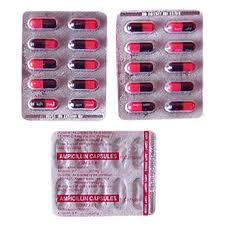
Product name:Ampicillin
Product description:Ampicillin is a beta-lactam antibiotic that has been used extensively to treat bacterial infections since 1961. penicillin therapies had only been effective against Gram-positive organisms such as staphylococci and streptococci. Ampicillin (originally branded as 'Penbritin') also demonstrated activity against Gram-negative organisms such as H. influenzae, coliforms and Proteus spp. Ampicillin was the first of a number of so-called broad spectrum penicillins subsequently introduced by Beecham. Ampicillin is part of the aminopenicillin family and is roughly equivalent to its successor, amoxicillin in terms of spectrum and level of activity.It can sometimes result in reactions that range in severity from a rash (in the case of patients that may unwittingly have mononucleosis) to potentially lethal allergic reactions such as anaphylaxis. However, as with other penicillin drugs, it is relatively non-toxic and adverse effects of a serious nature are encountered only rarely.
CAS No.:7177-48-2
Synonyms: Ampicillin trihydrate; D-(-)-6-(2-Amino-2-phenylacetamido)-3,3-dimethyl-7-oxo-4-thia-1-azabicyclo[3.2.0]heptane-2-carboxylic acid trihydrate
Molecular Formula: C16H19N3O4S.3(H2O)
Molecular Weight: 403.45
Risk Codes: R36/37/38; R42/43
Safety Description: S22;S26;S36/37
Application:Ampicillin is closely related to amoxicillin, another type of penicillin, and both are used to treat urinary tract infections, otitis media, uncomplicated community-acquired pneumonia, Haemophilus influenzae, salmonellosis and Listeria meningitis. It is used with flucloxacillin in the combination antibiotic co-fluampicil for empiric treatment of cellulitis; providing cover against Group A streptococcal infection whilst the flucloxacillin acts against the Staphylococcus aureus bacterium. Of concern is the number of bacteria that become resistant to Ampicillin necessitating combination therapy or use of other antibiotics.

